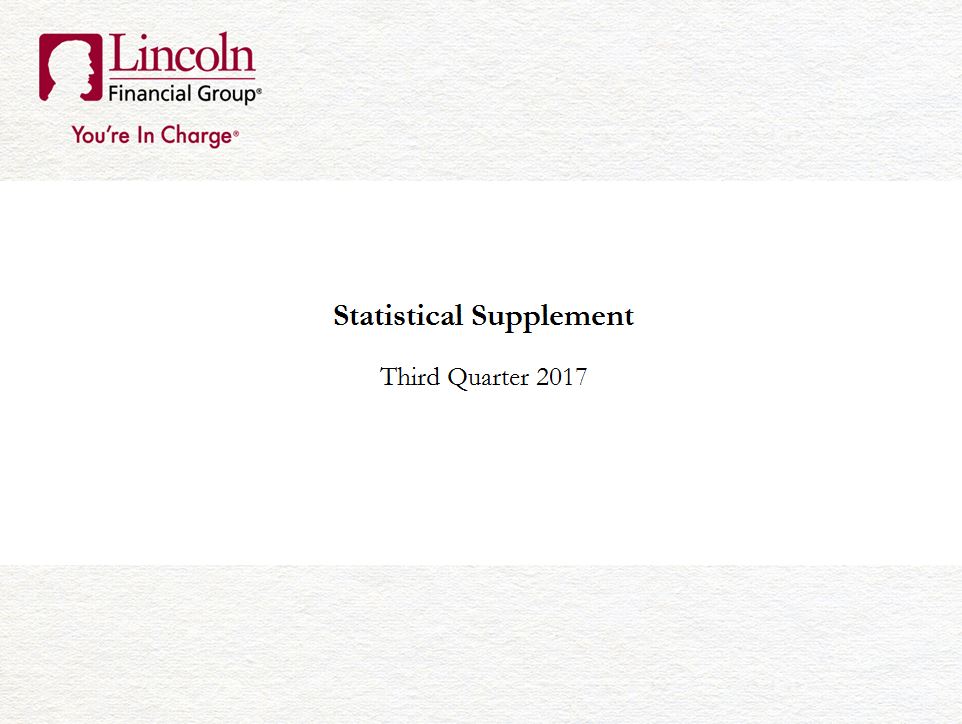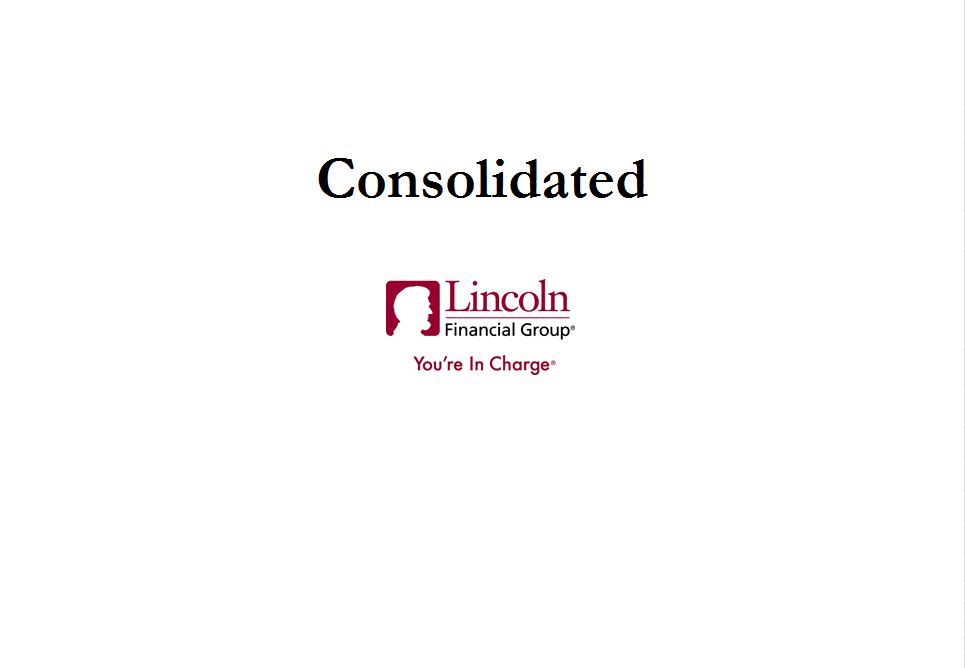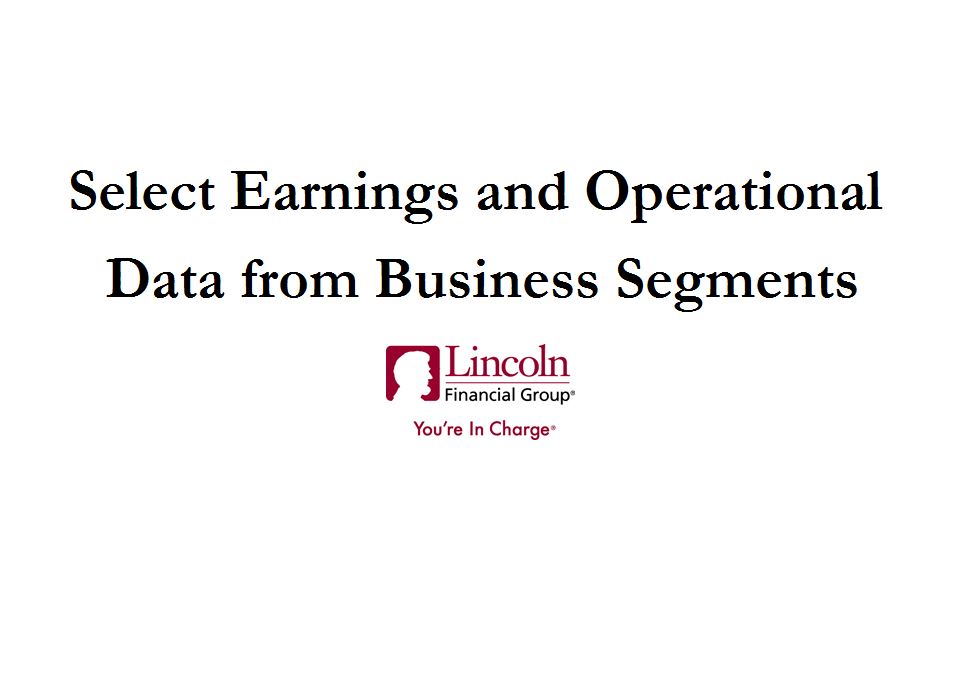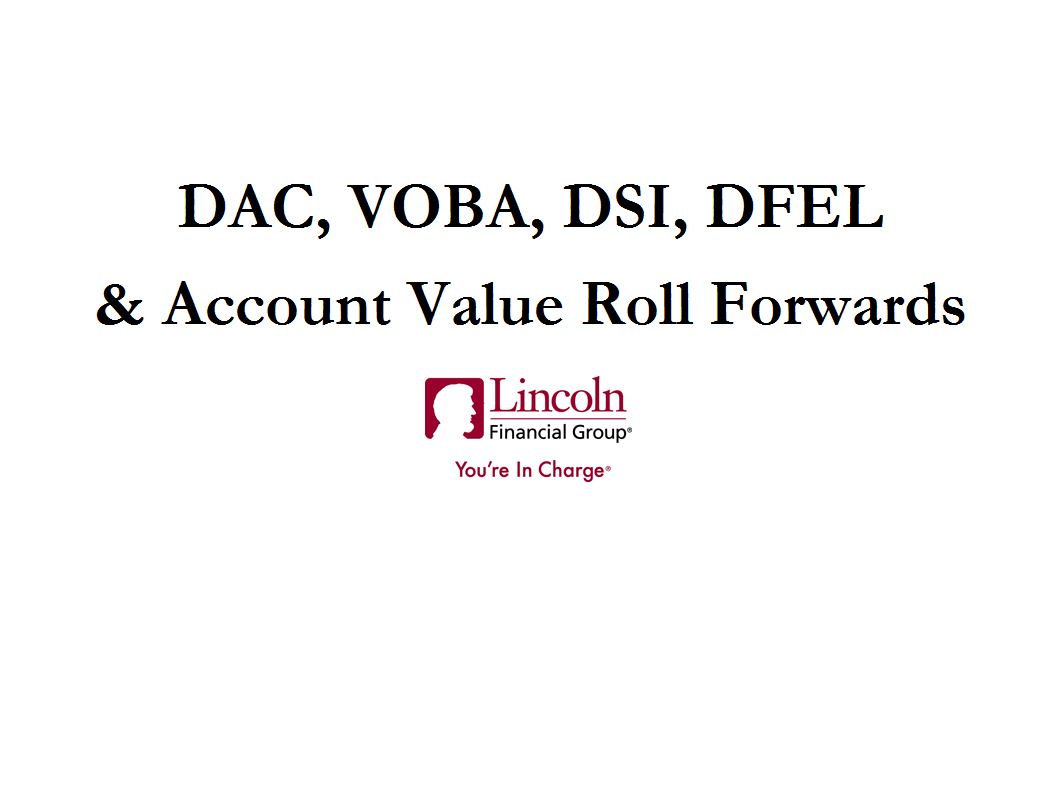| | |
| Lincoln Financial Group | |
| Notes | |
| | |
| | |
| Computations | |
| • The quarterly financial information for the current year may not sum to the corresponding year-to-date amount as both are rounded to millions. | |
| • The financial ratios reported herein are calculated using whole dollars instead of dollars rounded to millions. | |
| • If the effect of equity classification would result in a more dilutive Earnings Per Share (“EPS”), the numerator used in the calculation of our diluted EPS is adjusted to remove the mark-to-market | |
| adjustment for deferred units of LNC stock in our deferred compensation plans. In addition, for any period where a loss from continuing operations is experienced, shares used in the diluted EPS | |
| calculation represent basic shares, as using dilutive shares would be anti-dilutive to the calculation. In these periods, we would also exclude the deferred compensation adjustment. | |
| • Return on equity (“ROE”) measures how efficiently we generate profits from the resources provided by our net assets. ROE is calculated by dividing annualized net income (loss) (or income (loss) | |
| from operations) by average equity, excluding accumulated other comprehensive income (loss) (“AOCI”). Management evaluates consolidated ROE by both including and excluding the effect | |
| of average goodwill. | |
| • Book value per share, excluding AOCI, is calculated by dividing stockholders’ equity, excluding AOCI, by common shares outstanding. We provide book value per share, excluding AOCI, to enable | |
| investors to analyze the amount of our net worth that is attributable primarily to our business operations. Management believes book value per share excluding AOCI is useful to investors because | |
| it eliminates the effect of items that can fluctuate significantly from period to period, primarily based on changes in interest rates. Book value per share is the most directly comparable GAAP measure. | |
| • Pre-tax net margin is calculated by dividing income (loss) from operations before taxes by net revenue, which is defined as total operating revenues less interest credited. | |
| | |
| Definitions | |
| Holding company available liquidity consists of cash and invested cash, excluding cash held as collateral, and certain short-term investments that can be readily converted into cash, net of commerical | |
| paper outstanding. | |
| Sales as reported consist of the following: | |
| • MoneyGuard®, our linked-benefit product – 15% of total expected premium deposits; | |
| • Universal life (“UL”), indexed universal life ("IUL"), variable universal life (“VUL”) – first-year commissionable premiums plus 5% of excess premiums received; | |
| • Executive Benefits – single premium bank-owned UL and VUL, 15% of single premium deposits, and corporate-owned UL and VUL, first-year commissionable premiums plus 5% of excess | |
| premium received; | |
| • Term – 100% of annualized first-year premiums; | |
| • Annuities – deposits from new and existing customers; and | |
| • Group Protection – annualized first-year premiums from new policies. | |
| Throughout the document, “after-DAC” refers to the associated amortization expense of deferred acquisition costs (“DAC”), value of business acquired (“VOBA”), deferred sales inducements (“DSI”) | |
| and deferred front-end loads (“DFEL”) and changes in other contract holder funds. | |
| | |
| | |
| | |
| | |
| | |
| | |
| | |
| | |
Page 2a |




